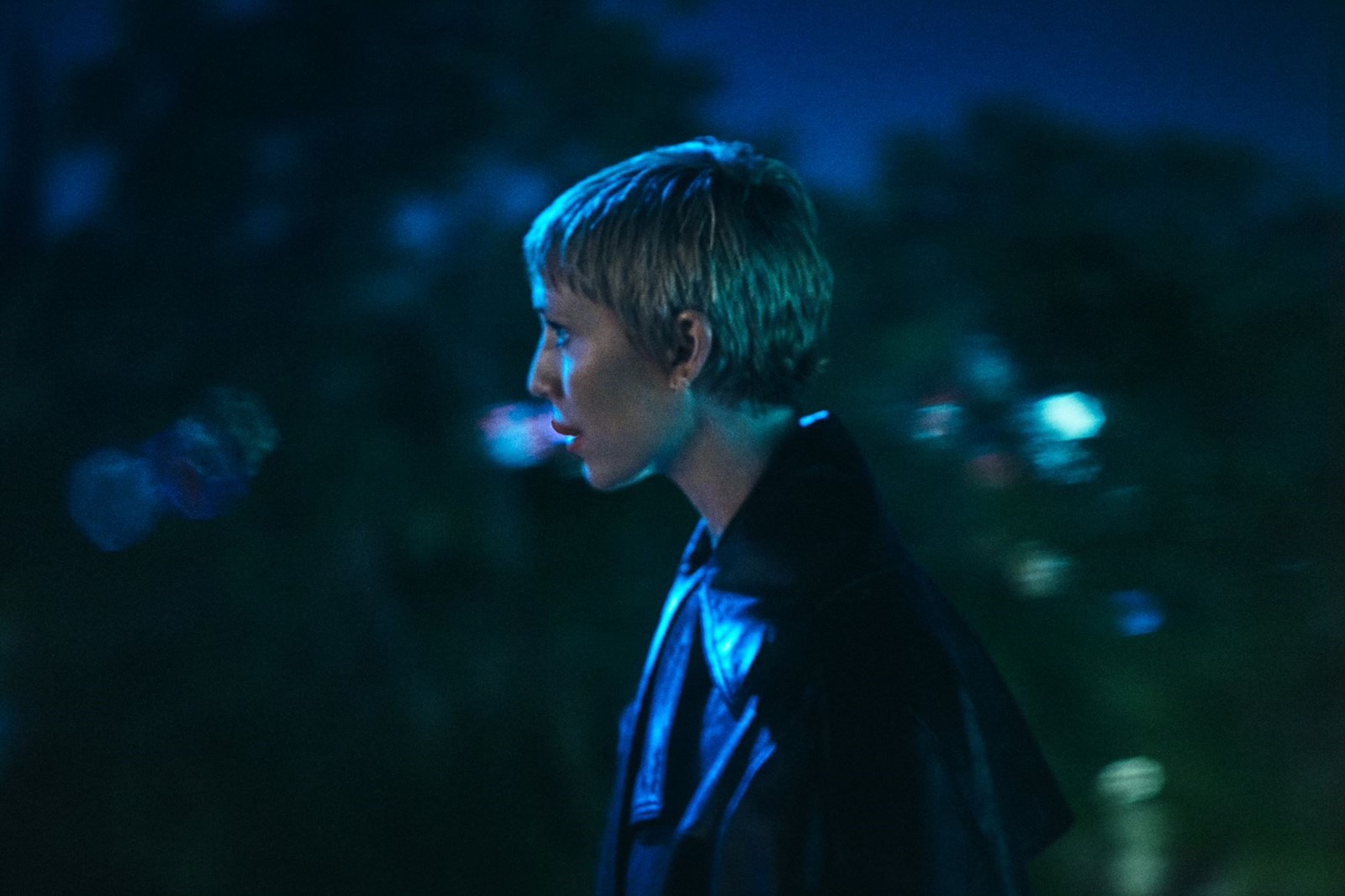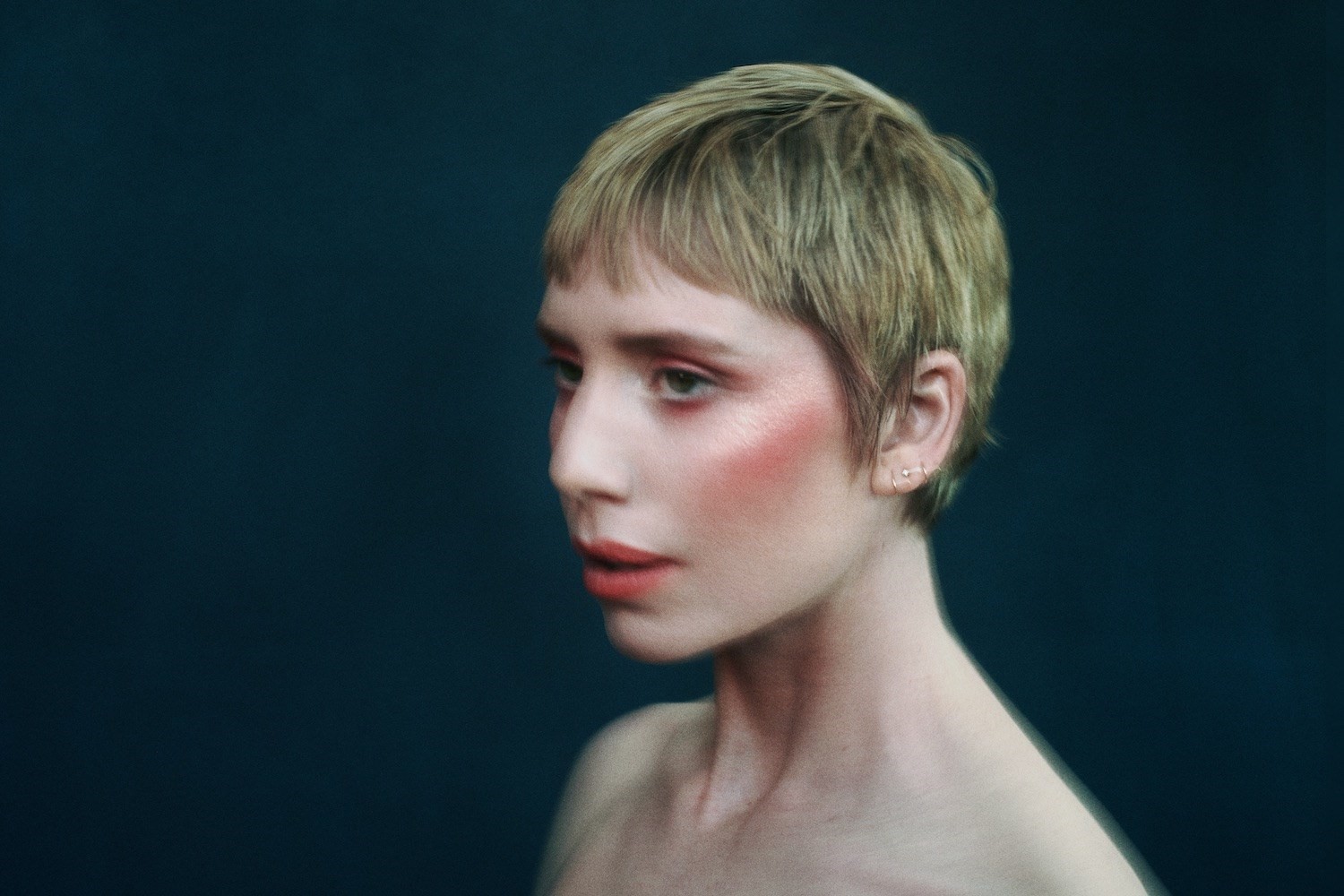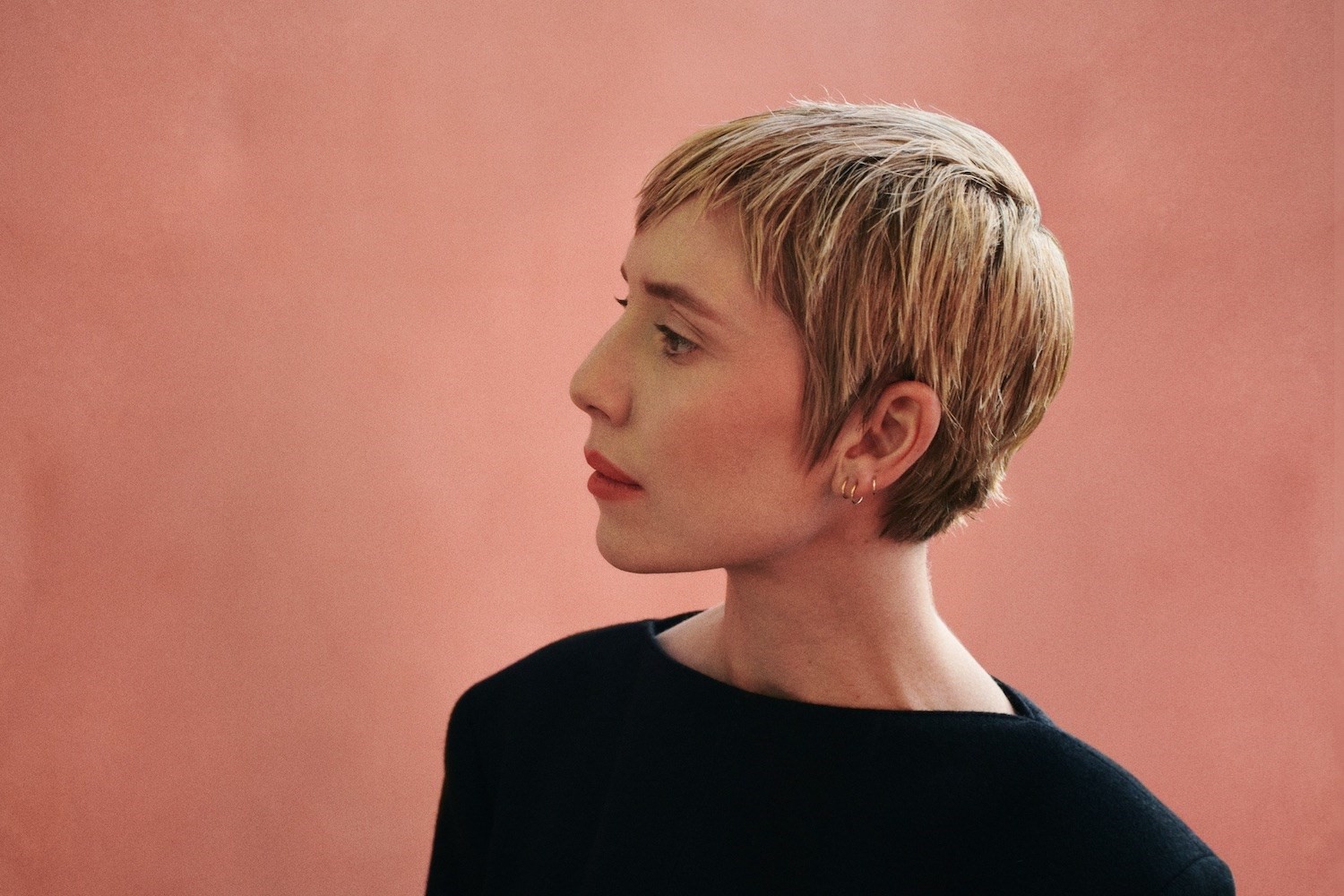A lovers’ quarrel; two naked dancers intertwined; the nocturnal sprawl of LA; a bleeding woman pulled from the wreckage of a car. These are some of the images burned on your brain by Eyeye, the palindromic, noir-inspired audio-visual project of Swedish singer-songwriter Lykke Li. Shot on 16mm film by A Single Man cinematographer Edu Grau, directed by Theo Lindquist, and starring Li opposite Unorthodox’s Jeff Wilbusch, it’s an intoxicating fever dream with no obvious end or start, hewn from hazy, looping vignettes, and beautifully accentuated by bruised, Eno-inspired synthscapes plucked from the accompanying LP.
If it all feels like a bit of a gear shift from the slick R&B and trap-inspired swagger of Li’s last album – 2018’s So Sad So Sexy – you’d be right. Speaking from her home in LA today, the 36-year-old frames her creative development as a sort of exorcism. “I had to get rid of the red, patent leather character of So Sad So Sexy – letting my blonde hair grow out, and living in two white T-shirts and two pairs of white painter’s pants – just so I could become a blank canvas again.” In her place is a character she describes as a “silent actress/gangster plucked from an Ingmar Bergman movie, by way of Michael Mann’s Heat.”
A self-confessed cinephile, Li happily reels off an array of influences for the doomed love story today, from Lars von Trier’s Breaking the Waves and Nicolas Winding Refn’s Pusher trilogy to Last Tango in Paris and Requiem for a Dream. These intensely dark and emotional touchpoints serve as a fair warning for the eight-track album the short films are set to arrive alongside, which features some of Li’s most emotionally raw and rewarding material to date.
Recorded in her living room in LA with long-time collaborator Björn Yttling, Li stripped the songwriting process back to its bare bones, eschewing digital instrumentation and incorporating first-take vocals where possible to preserve the emotional integrity of the piece. For an artist who has famously made heartbreak her calling card, it is perhaps the ultimate word on the subject, and is being billed as a “breakup with the breakup album.”
Here, Li discusses how Pina Bausch, an infatuation with romantic fantasy, and ayahuasca trips helped shape the world of Eyeye.

Gemma Samways: The minimalism of Eyeye feels like a reaction against So Sad So Sexy. Is that fair?
Lykke Li: Yeah. I remember Joan Didion said something like, as soon as you try to put an idea down on paper it gets destroyed. And it’s the same with music: you have this intimacy with the source material, and then you start producing and things go through so many different hands that in the end the finished result is often quite far from the intimacy of the actual idea. This time I really wanted to stay really direct and urgent, and not fuck with the rawness of the initial idea.
GS: Tell me about the creative chemistry between you and producer Björn Yttling?
LL: We hadn’t worked in, like, years so it was actually nerve-wracking to be back together, like, shit, do we still have it? It was like when a couple gets divorced and then they meet years and years later and realise the love is still there. So that was really beautiful.
But I just don’t know anyone else that pays as deep attention to chords and structure, as Björn does. We’re both obsessed with the process of crafting a song, and we have the same taste. So this time we knew we wanted the world to be quite dark and dirty and cinematic and beautiful.
“I became obsessed with art that has that repetitious quality, like Marina Abramović or Pina Bausch: the same movement over and over again. For me, that repetition really reflects an emotional truth” – Lykke Li
GS: Did you always envisage Eyeye as an audio-visual project?
LL: No, I was just so deep in the process of writing it and actually living the story. And then at the same time [I was] taking walks with my friend Theo [Lindquist], and I would tell him what was going on in real life, and he’s like, “Oh my god Lykke, your life is like a fucking movie.” So I’m like, should I actually make it into a movie?
Then it was like, how can we actually make this? Because nobody gives a shit about music videos as a form anymore, and it’s impossible to make a movie. So we came up with an idea: what if we make a movie, but you only get to see seven key scenes, and that movie is cyclical, reflecting the world we’re living in where we’re just watching a loop on Instagram?
Also, at the time I was stuck in my own repetition of getting heartbroken, making albums, making videos, going on tour, getting heartbroken, so I figured out that the concept [for the project] was the loop and [I] got obsessed with that. You see it everywhere in nature, from the cycles of the moon to menstrual cycles. And I became obsessed with art that has that repetitious quality, like Marina Abramović or Pina Bausch: the same movement over and over again. For me, that repetition really reflects an emotional truth, in that that’s also how the brain works. As humans, we’re stuck in our own patterns.

GS: How does that idea of repetition tie into the narrative of these films?
LL: Actually, I think the problem that I experience in my private life too is that I make things into a movie: I idealise and glamorise. Like, as soon as I fall in love, the movie starts in my head and I’m living in an alternate reality to the other person. So we wanted to create a movie within a movie, where one part is real and one part is not.
The plot is there are these two actors that are making a movie, and then every other scene is in-between takes, where me – the real person – is actually falling in love with the actor playing opposite me. For him, it is just a movie, but for me, it’s real. It’s about the blurring of that line between fantasy and reality, which is something I feel that women are especially good at. And I think that’s also why there’s usually so much disappointment and heartbreak and spiralling out of control: you’re living in two different realities.
GS: You’re setting yourself up to fail.
LL: Exactly. But then on top of that, I make art out of those experiences, so for me it becomes extremely meta. Filming this whole thing, I was like getting lost in my own maze. I was crying for real.
GS: Almost method acting?
LL: Exactly. My whole life is just method acting. (Laughs)
GS: The loops give the piece a hallucinatory quality. Was that the intention?
LL: Absolutely. If I look back at my life, the highest highs and the lowest lows have been surrounding love: love has been my drug of choice, and where all my baggage comes from. So I was really trying to portray what a heightened experience it is, especially when the pain hits. And at the same time, I was dealing with my own pain in a hallucinatory state, trying to overcome my love addiction by doing quite a lot of psychedelics. I did ayahuasca a couple times.

GS: How was that experience?
LL: It was the number one most intense, life-altering experience I’ve had in my life. I mean, even the image of the carousel and the spinning – parts of my trip were that. It’s almost impossible to describe, but it’s almost like you download ten years of therapy in one flash, covering all the pain and suffering and trauma you’ve ever been through.
And then sometimes you go into pure hallucinations and visions, so music is a big part of the ayahuasca experience. When you’re listening to music in that state, you realise that music is the portal to heaven and to healing. So while I’m dealing with this very painful thing [on Eyeye], I wanted the music to reflect heaven too. And I’m planning an immersive, audiovisual, spatial audio experience to accompany the album release, where you literally step on the carousel of love, where you enter the red room. It will basically be like an ayahuasca trip.
GS: Eyeye has been billed as a break-up with the break-up album …
LL: Yeah, I mean, I’m sure I’ll eat my words. But I am a little tired and in a way, I feel like I mastered my own form [with Eyeye]. I feel like if my 19-year-old self would see me now she’d be like, “Yes bitch!”
“I remember Joan Didion said something like, as soon as you try to put an idea down on paper it gets destroyed. And it’s the same with music” – Lykke Li
GS: Can you imagine writing from a place of contentment?
LL: I mean, I don’t know if the artist’s life is a life of contentment. Even if you’re in a happy relationship, you’re still rubbing against it. And there are so many things to be unhappy about, be that ageing or womanhood or injustices in the world. You can pick and choose. (Laughs)
I’m definitely much more interested in becoming a visual artist, or in creating worlds that embody images and music. I think I will move further and further away from pop structures. Because when I think of the women that I admire I don’t think about anyone in music. I think about Cindy Sherman, Tracey Emin, Jenny Saville: women who are artists and not just a face.
GS: And yet with this album you seem more authentically yourself than ever before?
LL: Yeah. I’m trying to just remind myself that I made this album for me: to give myself the gift of making the work that I’ve always wanted to make.
Eyeye by Lykke Li is out May 20.
